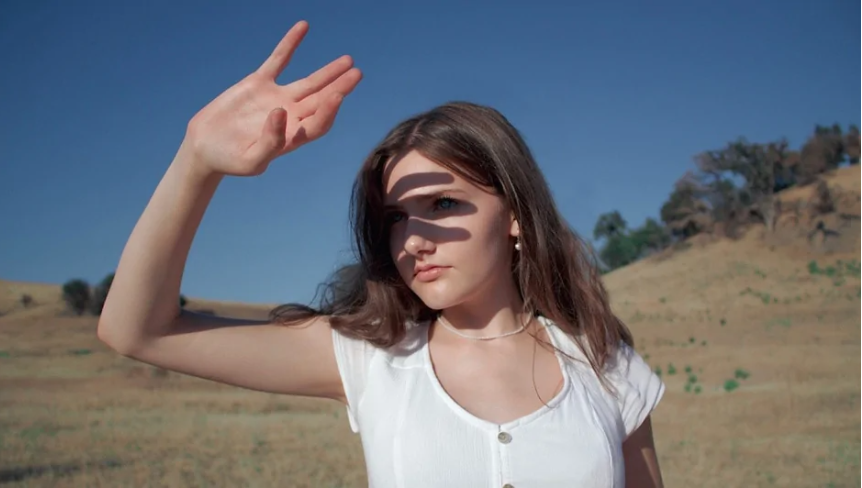My drawings and paintings are a catalog of my evolving relationship with myself and society.
As far back as I can remember, my greatest source of joy has been creating art. I was born and raised in Atlanta, Georgia, which is a remarkably diverse city. In classroom settings, however, I was usually surrounded by people who didn’t look like me—the only black and Jewish girl in school. My environment had a strong influence on what I created, so the figures I drew resembled my classmates; they had thin bodies, pale skin, blue eyes, and straight flowing hair.
It wasn’t until a peer pointed out this contradiction that I began to seriously consider how my internalized racism and dis-identification with myself manifested in my art. I made it a point moving forward to rework my relationship with myself in my drawings. I began to draw people with lips, skin, and hair that looked like mine. I embraced drawing figures with round bellies and bigger breasts.
Like magic, my mental image of myself improved. I realized what I was doing was healing myself through my artwork.

“You know black people can’t be Jewish, right?”
This phrase echoed through my elementary school classrooms every time I revealed that I was Jewish. I still remember the shame I felt from having my identity constantly questioned by the people I wanted so desperately to fit in with. No one else was navigating a Jewish and black identity simultaneously. As a result, I found myself categorized as “other.”
Originally, my discomfort with my otherness led me down the path of dis-identification. I did everything I could to avoid being seen as a strange little black Jewish girl. I traded this identity for the identity of those around me. I vowed to never wear my hair natural. I shied away from talking about my religion and holidays. The internalized racism I developed even got to a point where I would avoid the sun like the plague because of the fear of my skin becoming darker. I knew the darker I became, the more I would stick out and the more I would be laughed at when I said I was Jewish.
My fear of being recognized as different for my faith led me to try my best to enjoy classroom Christmas celebrations instead of resisting them. I also tried embracing going to church, but it never gave me the feeling of home that I experienced at synagogue.
Around the age of 13, I began to develop a positive relationship with my identity thanks to the social media platform Tumblr. When I got on Tumblr, I was exposed to a diverse stream of images of black people embracing themselves in a way that I didn’t usually see on television or in magazines. It was the first time I was exposed to purely black celebratory spaces that I could relate to. This inspired me to create my own empowering stream of images on my Tumblr page and in my sketchbook.
I realized that asserting my identity was a revolutionary act, as well as an act of liberation.

Today, I attend New College of Florida, where I study the intersection of art, religion, and politics. When I speak about myself and my work, I am often encouraged by members of the fine art community to reduce myself to just a few categorizes so that I am more easily digestible to a popular audience. We black artists are expected to speak about our work in relation to our ethnicity, while this is not commonly asked of our white counterparts. We are asked to explain our work in a way that doesn’t leave our white or wealthy audience with guilt. This is something I am excited to rebel against because it is the popular audience that needs to have a reality check. I believe there is no reason to feel guilty, regardless of your ethnicity or economic status, if you are committed to healing the past and building a compassionate future.
My inspiration to create artwork that challenges stereotypes of blackness comes from revolutionary artists like Emory Douglas and Jean-Michel Basquiat. Both artists used their work to respond to the oppression of black people while depicting blackness beyond narratives of oppression. Like them, I am trying to change the western world’s view of black people and our place as co-creators of the future.

While my artistic journey began with a focus on healing myself, I have come to understand that as an artist, it is vital that I use my platform to heal others. To that end, I work with abolitionist campaigns and pro-black reproductive justice organizations, including SONG (Southerners on New Ground), Freedom to Thrive, and Spark: Reproductive Justice NOW. The way my artwork contributes to a fight against injustice is through my use of portraiture and empowering depictions of the people our world is still learning how to support and empathize with: financially unstable folks, folks who struggle with mental illness, disabled folks, fat folks, trans and queer folks, and people of color.
I know that the world won’t heal spontaneously; we have to heal it ourselves. Black women, especially, should be encouraged to thrive and they should have the freedom to do so. They should be encouraged to love themselves and speak out when they see injustice. This cause is something absolutely worth fighting for, and I wake up every day more dedicated to winning this fight with my pen, paintbrush, and the spiritual teachings that inspire me.







